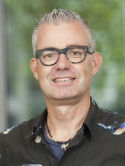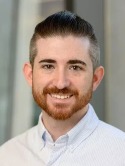Model-based antithymocyte globulin in αβhaplo-hematopoietic stem cell transplantation facilitates engraftment, expedites T cell recovery, and mitigates the risk of acute graft-versus-host disease Journal Article
| Authors: | Barbarito, G.; Hiroshima, L.; Oppizzi, L.; Saini, G.; Kristovich, K.; Klein, O.; Hosszu, K.; Boehlke, K.; Gupta, A.; McAvoy, D.; Shyr, D.; Boelens, J. J.; Bertaina, A. |
| Article Title: | Model-based antithymocyte globulin in αβhaplo-hematopoietic stem cell transplantation facilitates engraftment, expedites T cell recovery, and mitigates the risk of acute graft-versus-host disease |
| Abstract: | In alpha beta T-cell/CD19 B-cell depleted hematopoietic stem cell transplantation (alpha beta haplo-HSCT) recipients, antithymocyte globulin (ATG; Thymoglobulin) is used for preventing graft rejection and graft-versus-host disease (GVHD). The optimal dosing remains to be established, however. Here we present the first comparative analysis of 3 different ATG dosing strategies and their impact on immune reconstitution and GVHD. Our study aimed to evaluate the effects of 3 distinct dosing strategies of ATG on engraftment success, alpha beta(+) and gamma delta(+) T cell immune reconstitution, and the incidence and severity of acute GVHD in recipients of alpha beta haplo-HSCT. This comparative analysis included 3 cohorts of pediatric patients with malignant (n = 36) or nonmalignant (n = 8) disease. Cohorts 1 and 2 were given fixed ATG doses, whereas cohort 3 received doses via a new nomogram, based on absolute lymphocyte count (ALC) and body weight (BW). Cohort 3 showed a 0% incidence of day 100 grade II-IV acute GVHD, compared to 48% in cohort 1 and 27% in cohort 2. Furthermore, cohort 3 (the ALC/BW-based cohort) had a significant increase in CD4(+) and CD8(+) na & iuml;ve T cells by day 90 (P = .04 and .03, respectively). Additionally, we found that the reconstitution and maturation of gamma delta(+) T cells post-HSCT was not impacted across all 3 cohorts. Cumulative ATG exposure in all cohorts was lower than previously reported in T cell-replete settings, with a lower pre-HSCT exposure (<40 AU*day/mL) correlating with engraftment failure (P = .007). Conversely, a post-HSCT ATG exposure of 10 to 15 AU*day/mL was optimal for improving day 100 CD4(+) (P = .058) and CD8(+) (P = .03) immune reconstitution without increasing the risk of relapse or nonrelapse mortality. This study represents the first comparative analysis of ATG exposure in alpha beta haplo-HSCT recipients. Our findings indicate that (1) a 1- to 2-fold ATG to ATLG bioequivalence is more effective than previously established standards, and (2) ATG exposure post-HSCT does not adversely affect gamma delta(+) T cell immune reconstitution. Furthermore, a model-based ATG dosing strategy effectively reduces graft rejection and day 100 acute GVHD while also promoting early CD4(+)/CD8(+) immune reconstitution. These insights suggest that further optimization, including more distal administration of higher ATG doses within an ALC/BW-based strategy, will yield even greater improvements in outcomes. |
| Keywords: | survival; graft rejection; children; association; immune reconstitution; multicenter; acute; exposure; graft-versus-host disease; acute-leukemia; open-label; anti-thymocyte globulin; alpha beta t cell/cd19 b cell-depleted hematopoieticstem cell; transplantation(alpha beta haplo-hsct); model-based atg dosing; cd4/cd8; immunereconstitution; gamma delta t cell reconstitution; lymphocyte globulin |
| Journal Title: | Transplantation and Cellular Therapy |
| Volume: | 30 |
| Issue: | 8 |
| ISSN: | 2666-6375 |
| Publisher: | Elsevier Inc. |
| Date Published: | 2024-08-01 |
| Start Page: | 810.e1 |
| End Page: | 810.e16 |
| Language: | English |
| ACCESSION: | WOS:001284921200001 |
| DOI: | 10.1016/j.jtct.2024.05.015 |
| PROVIDER: | wos |
| PUBMED: | 38768907 |
| PMCID: | PMC12037022 |
| Notes: | Article -- MSK Cancer Center Support Grant (P30 CA008748) acknowledged in PDF -- Source: Wos |
Altmetric
Citation Impact
BMJ Impact Analytics
Related MSK Work






